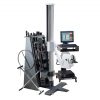
Supervision of PTAs and COTAs
Practice ManagementMedicare and commercial insurers have requirements about supervision and documentation of PTA, COTAs, students, and techs/aids. These requirements may differ from your state regulations, so you must be familiar with both.
Can Physical Therapists and Occupational Therapists delegate evaluations and progress reports to their assistants? Can COTAs and PTAs make decisions about the plan of care? Who can perform dry needling? If you’ve asked these questions in your practice, you’re not alone. Many clinicians raise questions about delegation, supervision, and specific interventions in their practice. Your state’s practice acts answer these and many more questions about scope of practice.
Overview of practice acts and scope of practice
A practice act defines the scope and practice of your profession within your state. The scope of practice describes what procedures you can perform, based on your professional license, whether as an OT, PT, COTA, PTA, a student, or other support personnel. In addition to adhering to your state’s practice acts, you must also follow any regulations from the state licensure board or other state agencies, like the department of health. When a state’s practice act is silent on an issue, the licensing board defines what is beyond the scope. In these situations, contact the respective board for clarification.
Not all practice acts are created equal
Physical Therapists, Occupational Therapists, and their assistants are licensed and regulated in all 50 states, D.C., Puerto Rico, and the US Virgin Islands. Just like other state laws, professional scopes of practice vary state by state. What’s legal in one state may not be part of the legal scope in another. Definitions may differ. Supervision requirements can vary. So, should you relocate to another state or practice in more than one state, familiarize yourself with the appropriate practice acts.
Scope of practice changes
A scope of practice changes as contemporary practice evolves. State regulatory boards determine whether a certain intervention is appropriate, according to the scope of practice. For example, some states may have recently updated regulations to address direct access. Others offer definitions of dry needling and the minimum training necessary to perform the intervention. If you plan to learn new or advanced treatment interventions such as dry needling or electromyography, be sure to review your state’s practice act to ensure you can legally perform that intervention.
Other organizations that issue guidelines
It’s not just the state that issue practice guidelines – it’s also professional organizations, Medicare, and commercial insurers and payers. Medicare and commercial insurers have requirements about supervision and documentation of PTA, COTAs, students, and techs/aids. Recognize that these may differ from your state regulations, so you must be familiar with all. Know that you must comply with the state regulations and then any payer-related requirements that exceed those of the state. This relates to scope of practice, supervision of PTAs, COTAs, students, and aides/techs, and documentation requirements. Keep in mind that Physical and Occupational Therapists have to know the scope of practice and administrative rules for the assistants they oversee.
Supervision requirements
Many questions arise about supervision of clinic personnel. Definitions of levels of supervision vary across regulatory agencies, professional organizations, and payers. Some states offer straightforward definitions, while others are vague.Based on a search of levels of supervision, the following information from named sources provide definitions:
PTA supervision according to APTA
The American Physical Therapy Association House of Delegates defines three types of supervision1:
“General Supervision: The physical therapist is not required to be on site for direction and supervision but must be available at least by telecommunications.Direct Supervision: The physical therapist is physically present and immediately available for direction and supervision. The physical therapist will have direct contact with the patient/client during each visit that is defined in the Guide to Physical Therapist Practice as all encounters with a patient/client in a 24-hour period. Telecommunications does not meet the requirement of direct supervision.Direct Personal Supervision: The physical therapist or, where allowable by law, the physical therapist assistant is physically present and immediately available to direct and supervise tasks that are related to patient/client management. The direction and supervision are continuous throughout the time these tasks are performed.”
COTA supervision according to AOTA
The American Occupational Therapy Association outlines a system for supervision in a model document made for state regulatory agencies2:
“A variety of types and methods of supervision may be used. Methods may include direct face-to-face contact and indirect contact. Examples of methods or types of supervision that involve direct face-to-face contact include but are not limited to observation, modeling, co-treatment, discussions, teaching, instruction, and video teleconferencing. Examples of methods or types of supervision that involve indirect contact include but are not limited to phone conversations, written correspondence, electronic exchanges, and other methods using secure telecommunication technology. All methods should be compliant with confidentiality requirements of government agencies, facilities, employers, or other appropriate bodies.”
Other requirements for supervision
In December 2018, Medicare updated their requirements for physical therapy supervision. Similarly, Medicare also defines supervisory roles for occupational therapy. State boards and commercial insurers or payers also issue regulations on supervision. Usually, insurers defer to Medicare guidelines. With multiple sources of rules and regulations, it is vital that you review each thoroughly to ensure compliance. A good rule of thumb for is to always follow regulatory requirements. But if payer requirements are more stringent, default to those requirements. And, if definitions are vague or not available, always provide direct supervision.
What else is in my state’s practice act?
In addition to supervision, your state’s practice acts cover several other important topics:
- Definitions and General Provisions
- Codes of Ethics
- Licensure regulations
- Continuing Education requirements
- Procedures for disciplinary matters and hearings
- Disciplinary sanctions, monetary penalties, civil fines
Working outside your practice acts
Life doesn’t always reflect the ideal circumstances. Unfortunately, you may be asked to work outside of your practice acts. For example, a manager may ask you to permit assistants to perform advanced tasks. With today’s productivity demands, you may likely encounter clinicians providing less than the required level of supervision to assistants, students or aids/techs.
In these situations, you must speak up for yourself. It is better to take time to treat patients the right way than to take a shortcut and put yourself, your team and your patient at risk. If an injury occurs during an inappropriately supervised treatment, you license could be in jeopardy.Protect yourself, your clinic, and your patients by knowing and following all practice acts, rules, and regulations.
Janna Jacobs, PT, CHT, CEAS
Senior Clinical Research Specialist
BTE
References
- 2009 APTA HOD Levels of Supervision. APTA. https://www.apta.org/uploadedFiles/APTAorg/About_Us/Policies/HOD/Terminology/Supervision.pdf
- Model State Regulation for Supervision, Roles, and Responsibilities During the Delivery of Occupational Therapy Services. AOTA. https://www.aota.org/~/media/Corporate/Files/Advocacy/State/Resources/Supervision/MSRSOTA.pdf





